APEGA Innovation in Education Awards
What are they?
The APEGA Innovation in Education Awards offer educators and students a unique opportunity to expand their knowledge of engineering and geoscience and initiate positive change outside of their school. These awards challenge classes to identify and generate an innovative solution to an issue or challenge faced by residents in their community. Up to $5000 is available for each initiative.
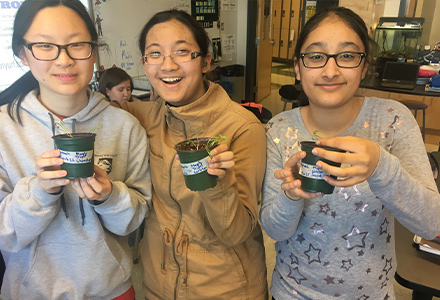
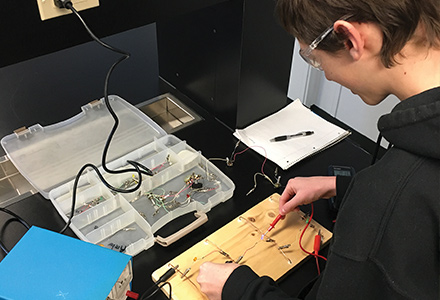
Who can apply?
All Alberta schools and educators certified to teach in Alberta can apply!
You must:
- be currently employed by a Grade K to 12 school or school board
- be in a role that works with K to 12 students
- have the full support of your school or school board
How do you win?
We encourage you to think BIG and think outside the box. We're looking for creative, high-impact proposals that allow students to lead the charge and create amazing results for their classroom and community.
Be curious and ask questions! We encourage you to adopt a Design Thinking mindset: seek to identify and understand a key challenge for residents of your community and consider opportunities to address this challenge through the application of engineering and geoscience principles. We recognize that finding the best solution is an iterative process: plan time with your class to ideate and prototype different solutions, requesting feedback from your stakeholders (those directly impacted by the challenge or problem) along the way. In doing so, you will also be introducing students to the Engineering Design Process and how professional engineers develop solutions for their clients.
Initiative Inspiration
Use the following ideas to kickstart your brainstorming. Remember, these are meant to be sources of inspiration and should not limit your creative process.
- The Invisible Bicycle Helmet is a short documentary about Hövding, an airbag-style bicycle helmet that is hidden in a special collar. The documentary includes interviews with the helmet’s Swedish designers, Anna Haupt and Terese Alstin, who began developing Hövding while still in school.
- Students create an app in partnership with a community organization that solves a problem affecting the community. Students learn coding and the organization gets a useful app to solve a problem.
- Students create a device and correlated communication campaign to bring awareness to forest fire risks and actively prevent fires from starting.
- Students travel to an area affected by Dutch Elm disease, learn to identify affected trees, map the location of diseased trees, and create a website to allow members of the public to add their sightings.
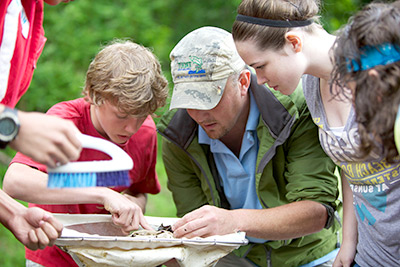
Past Projects that Have Won an Innovation in Education Award
Design Thinking
Notre Dame High School (Calgary)
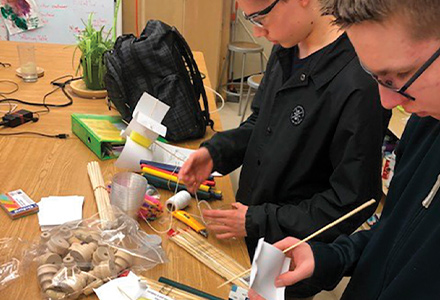
High school pre-engineering and welding students worked to design and build a wind turbine and generator. The turbine was used to generate electricity to power a cellphone charger that can be used by students
Mars, Moon, and Micro:bits
Ecole Champs Vallee School (Beaumont) and Michael Strembitsky School (Edmonton)
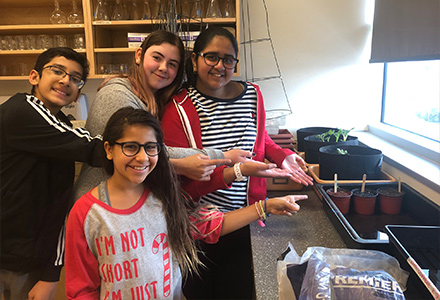
Junior high students explored the geoscience of farming in martian and lunar soil, and they developed automated sensor-and-response systems by coding Micro:bit computers to create monitoring, watering, and lighting plant-care systems.
PDAs: Public Displays of Astronomy
College Park School (Lloydminster)
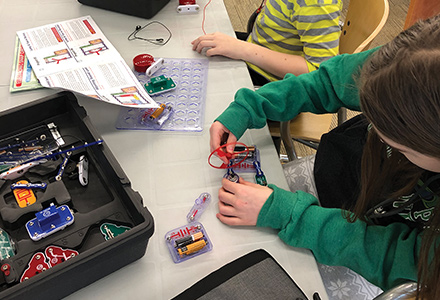
College Park School is home to the Synergy Observatory, open during public evenings and planned field-trip visits. To enhance the observatory experience for visitors, students created immersive, interactive, and multimedia displays centered around the theme of space.
South Exshaw Interpretive Trail
Exshaw School (Exshaw)
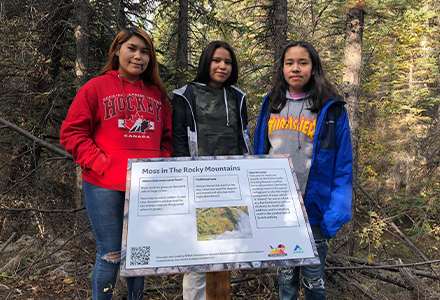
Students installed interpretive trail signs with QR codes along the South Exshaw Trail. Visitors are linked to student-curated websites with further research about natural elements and how the elements interact within the ecosystem of the Bow River basin. They also researched traditional Stoney Nakoda uses of the area and stories to include on the signs and websites.
Sustainable Plastic Autonomous Machine (SPAM)
Our Lady of the Snows Catholic Academy (Canmore)
Grade 7 to 11 students created a red fluorescent bio-tag that allows them to identify PET #1 plastic within mixed municipal collection sites and to sort it from landfill waste for recycling. They also prototyped a robotic system to identify and separate
the PET #1 bio-tagged plastic.
Surviving a Natural Disaster!
SouthPointe School (Fort Saskatchewan)
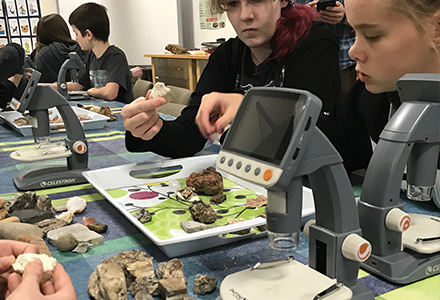
Students demonstrated creativity, collaboration, and empathy using their knowledge of structures, forces, and Earth to design a prototype structure or product that could help a community survive a natural disaster.
Media Attention for Past Winners
We're not the only ones who think the Innovation in Education Awards are amazing! See below for what the media has said about one of our 2019-20 submissions.
The Project Proposal
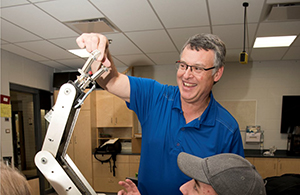
Photo credit: KEVIN MA/St. Albert Gazette
Sturgeon Composite High School Robotics Project
Sturgeon Composite High School (Sturgeon County)
Educator: Kevin Hubick
Students will design and build a semi-autonomous robotic platform that can move systematically through inner city parks or alleys, searching for, retrieving, and safely storing sharps and hazardous waste.
Media Coverage
- February 19, 2022 | Strathmore Now.com: Two Strathmore teachers recognized with Innovation in Education Awards
- September 19, 2019 | St. Albert TODAY.ca: Meet Professor Robot
- November 14, 2019 | St. Albert TODAY.ca: Spirit Rover takes shape at Sturgeon Comp
"That is not what I did for school projects ... that's hardcore" I really liked news anchor @Quinnohler comments at the end of the clip. Yes indeed, this STEM-based student project sets us apart! #SturgeonRobotics pic.twitter.com/oFVrFpTByI
— Kevin Hubick (@KevinHubick) November 9, 2019
